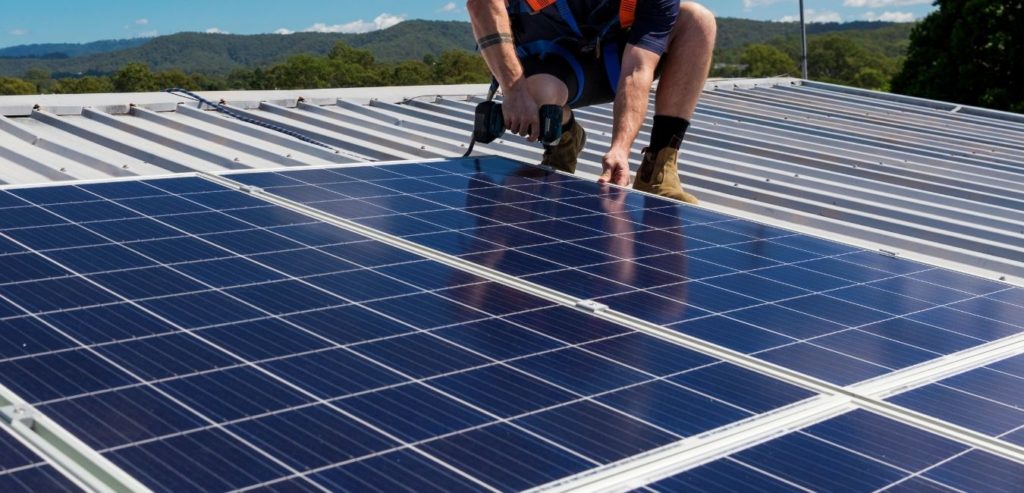Planning a Home Solar System
Adding a solar energy system to your home may seem like a daunting process, but it’s really just a matter of following 7 basic steps. The process may vary a bit depending on your specific utility company and the Authority Holding Jurisdiction (AHJ) for your precise location (where the solar installation will occur).
In general, this is what it will look like for residents who wish to install solar energy systems in Oregon or Washington state. Here at Sunbridge Solar, we want you to know what to expect from the solar process so you can make an informed, confident decision!
1) Assess the Energy Efficiency of Your Home
The first step is to determine how much energy your household uses on average, so you know how much solar you will need. If you come to find out that you use more energy than you thought, consider making energy efficiency upgrades to your home to better prepare for solar energy.
This can include a variety of techniques, including using your appliances more efficiently, replacing old light bulbs with efficient LED bulbs, winterizing your home to reduce heating costs, or investing inefficient windows and doors that reduce heating and cooling costs.
You can perform a home energy audit on your own or hire someone to do it for you, where they will identify how much energy you currently use on average and suggest ways to reduce your usage if necessary.
2) Assess the Amount of Energy Needed
Next, assess whether the location and orientation of your home lend itself to solar energy by calculating its solar potential. Solar panels generate energy using both direct and scattered sunlight (on overcast days, for example), but of course, the solar potential of your home depends on how much of the sun’s light can actually reach your panels.
There are several online tools available to help you estimate your home’s solar potential and many of them also offer information regarding suggested system size, how much you might pay for a system, what your energy savings might be, and other pertinent details based on your location.
While these tools are a great starting point, they will not be able to account for absolutely all of the variables that will apply to your specific situation. Our professional solar installation team here at Sunbridge Solar can provide you with a more accurate solar potential assessment as well as price estimates, system size suggestions, and equipment recommendations.
Things to keep in mind while assessing your home’s solar potential include factors like:
- shade and a potential shade (trees that may grow and eventually shade your roof
- neighboring construction that could block the sun, etc.
- the age and quality of your roof
- and any homeowner association regulations surrounding solar energy systems on roofs.
If your roof is nearing the end of its lifespan, it would be wise to replace it before installing solar panels, as panels can last 20-30 years, and removing them to replace your roof and then reinstalling the panels will be unnecessarily labor-intensive and expensive.
3) Consider Your Options for Going Solar
There are many different options that allow you to benefit from solar energy. The most common one of course is to purchase your own solar energy system and install directly onto your roof. In recent years, a popular trend is homeowners are choosing to add a battery bank in combination with their solar power system to power their home.
However, if you determine that your home doesn’t have adequate solar potential through a solar analysis or you don’t want to or can’t install solar panels on your roof, you may opt for a ground-mounted system elsewhere on your property or invest in a community or shared solar energy program.
These programs allow you to pool your money with other participants to buy into a solar system that works for all of you, which may be near your residence or off-site. This can be a great option if you rent, live in a condo, or otherwise do not have adequate roof space, or you don’t want to be responsible for maintaining and repairing a system of your own.
4) Estimate Your Solar Energy Production Goals
Refer to your analysis of your household’s energy consumption levels, looking at each month individually to determine your peak and average usage throughout the year. Take into account any planned changes that might increase your energy consumption rate, such as a future addition to your home, purchase of an electric vehicle, construction of a pool, and so forth. Conversely, planned efficiency upgrades can lower your energy needs over time.
5) Get Bids from Contractors
While we hope that you choose to work with us here at Sunbridge Solar, we understand that solar energy is a big investment so we encourage you to get several bids from local contractors to see how our service and prices stack up. Of course, all installers should be certified with the Energy Trust of Oregon and insured.
Questions to ask your potential contractors include:
- Is the installer familiar with local permits and regulations surrounding installation and interconnection?
- Can the installer provide local references?
- Can they provide proof of licensure and insurance?
- What type of warranty do they offer?
Additionally, make sure that all bids are for the same or similar system metrics and characteristics so you can easily compare the offers. In the bid, look for information like the maximum generating capacity of the system, an estimate of how many kilowatts the system will produce on a monthly basis, the total cost of installing the system including all equipment and service costs, and a cost per watt estimate (which makes it easier to compare bids for systems of different sizes).
6) Explore Incentives and Financing Options
Oregon has some of the best solar incentives in the country, which can significantly lower your upfront solar cost. There is also a federal tax credit that allows you to deduct a significant percentage of the cost of installing your system from your federal tax liability amount.
However, these incentives only apply if you own the system yourself, not if you lease it or enter a Power Purchase Agreement. Our team at Sunbridge Solar will help you find and take advantage of all applicable solar incentives.
Read More About Incentives in Your State
You can also explore financing options to help spread the cost out over several years. As solar energy has grown in popularity over the last couple of decades, there are now more solar financing options available than ever before which makes solar more accessible to more people.
7) Work With Your Contractor and Utility Company to Install the System
Once you’ve selected a contractor from your bid pool, they will work with you through the system design and permitting processes before going ahead with the installation. Your contractor will make a final system size decision based on your anticipated energy consumption, the available sunlight at your home, the orientation and tilt of your roof where the panels will be mounted, the efficiency of the panels that you select, and other detailed factors.
They will also work with your utility company to ensure a smooth interconnection process and make sure that your system passes inspection.
Ready to Go Solar? Contact Us for a Free Consultation
Contact us at Sunbridge Solar today for a free solar consultation and project quote. We will be more than happy to answer any questions you might have and help you decide whether solar is right for you!
FAQs
Here are a few questions we get asked frequently about residential solar installations.
Grid-tied means the solar system is connected directly to your local electricity grid. For grid solar, net metering is the main mechanism that will be used to calculate your final electricity bill after subtracting the amount you generated over the billing period.
In nearly all cases, the answer is yes. There are sometimes less permitting requirements for 100% off-grid solar systems powered by battery backup because they are not connecting to the electricity grid.
If you need a solar planet set or permit design for your DIY solar project, we recommend contacting Avila Solar Drafting Services. They offer many solar drafting services that are required for DIY projects, such as building permits.


